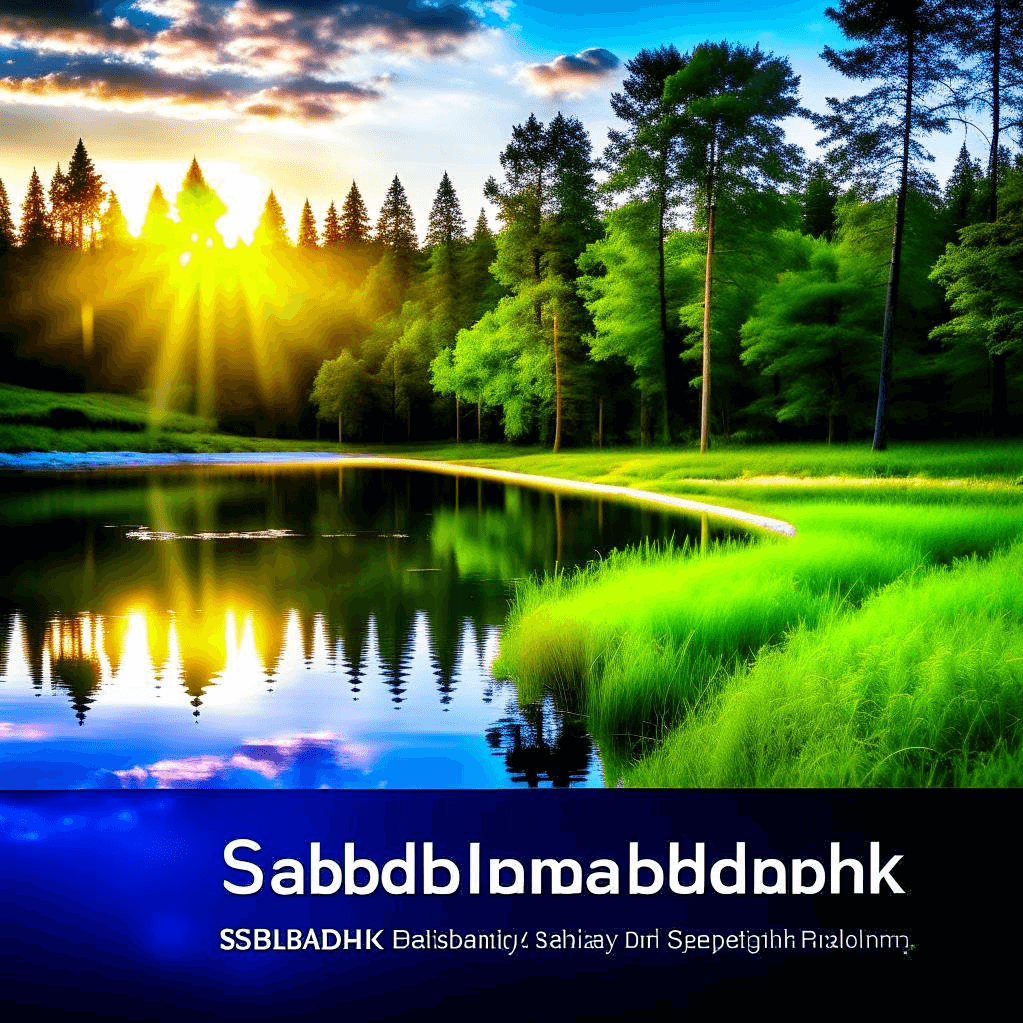In our fast-paced world, finding moments of peace and reflection can be a challenge. That’s why Sabbath meditations offer a valuable opportunity to slow down, connect with our inner selves, and practice the way. Whether you follow a specific religious tradition or simply seek a deeper sense of spirituality, incorporating Sabbath meditations into your routine can bring a sense of calm and renewal. In this article, we will explore the power of Sabbath meditations, different techniques you can try, and how they can help you find inner peace and reflection. So, take a deep breath and join us on this journey of serenity and self-discovery.
Contents
I. Understanding the Sabbath
II. The Power of Meditation
III. Sabbath Meditations: Practices and Techniques
IV. Finding Peace and Reflection: Sabbath Meditations in Action
V. Integrating Sabbath Meditations into Your Practice
VI. Conclusion
I. Understanding the Sabbath

The Sabbath is a special day that has been observed by people for centuries. It is a time of rest and rejuvenation, when people take a break from their usual activities and focus on their spiritual well-being.
The origins of the Sabbath can be traced back to ancient times, when people believed that the world was created in six days and on the seventh day, God rested. This belief led to the tradition of setting aside one day a week for rest and reflection.
Different cultures and religions have their own interpretations of the Sabbath. For example, in some traditions, the Sabbath is observed on Saturdays, while in others it is observed on Sundays. Some people may attend religious services on the Sabbath, while others may spend the day in quiet contemplation.
Regardless of the specific day or religious practices, the common thread of the Sabbath is the idea of taking a break from the busyness of life and finding peace and reflection. It is a time to slow down, connect with one’s inner self, and deepen one’s spiritual journey.
During the Sabbath, people may engage in various activities to cultivate peace and reflection. This can include prayer, meditation, reading sacred texts, spending time in nature, or simply taking a nap. The goal is to create a space for quietude and self-reflection, away from the distractions and demands of everyday life.
While the specifics of Sabbath observance may vary, the underlying purpose remains the same – to find peace and reflection in practicing the way. By setting aside dedicated time for rest and rejuvenation, individuals can nourish their souls, gain clarity, and deepen their connection to their spiritual path.
Incorporating Sabbath meditations into one’s spiritual practice can be a transformative experience. It allows individuals to slow down, tune in to their inner wisdom, and find solace in the midst of life’s challenges. By embracing the Sabbath as a time for peace and reflection, individuals can cultivate a sense of harmony and balance in their lives, leading to greater fulfillment and spiritual growth.
II. The Power of Meditation

Meditation is a superpower that can bring incredible benefits to our minds, hearts, and souls. It’s like a secret weapon that helps us find inner peace and reflection in our busy lives. When we meditate, we tap into a well of tranquility and wisdom that resides within us.
Did you know that meditation has been practiced for thousands of years? Ancient civilizations believed that it could unlock hidden powers and connect us to higher realms. While we can’t prove these claims, what we do know is that meditation has a profound impact on our well-being.
One of the amazing things about meditation is that it can calm our racing thoughts and bring us into the present moment. It’s like hitting the pause button on our minds. When we meditate, we give ourselves a break from the constant chatter and worries that often consume us.
But that’s not all! Meditation also has incredible benefits for our emotional well-being. It can help reduce stress, anxiety, and even depression. It’s like a soothing balm for our frazzled emotions. When we meditate, we create space for peace and serenity to enter our hearts.
And here’s the really mind-blowing part: meditation can deepen our connection to our spiritual path. It’s like a direct line to the divine. When we quiet our minds and open our hearts, we can receive insights, guidance, and inspiration from a higher power. It’s like having a spiritual GPS that helps us navigate the twists and turns of life.
Now, you might be wondering how to meditate. Well, there are many different techniques, but the key is finding what works for you. Some people like to focus on their breath, while others repeat a mantra or visualize peaceful scenes. It’s all about finding a method that resonates with you and brings you into a state of calm and clarity.
So, if you want to experience the power of meditation, give it a try! Find a quiet space, close your eyes, and take a few deep breaths. Let go of any tension or worries and simply be present in the moment. You might be surprised at the peace and reflection that washes over you.
Remember, meditation is like a superpower that lies within all of us. It’s a tool that can help us find peace, clarity, and connection. So, why not harness this power and make it a part of your spiritual practice? Give it a go and see the magic unfold in your life.
III. Sabbath Meditations: Practices and Techniques

In this section, we will explore some simple and effective practices and techniques for Sabbath meditations. These practices can help you find peace and reflection as you embark on your spiritual journey.
1. Mindfulness Meditation: Mindfulness meditation is a powerful practice that involves focusing your attention on the present moment. It helps you become aware of your thoughts, feelings, and sensations without judgment. By practicing mindfulness meditation on the Sabbath, you can cultivate a sense of inner calm and connect with your spirituality.
2. Contemplative Prayer: Contemplative prayer is a form of prayer that involves quieting the mind and opening the heart to experience a deep connection with the divine. Through contemplative prayer, you can find solace and guidance on your spiritual path. Take time on the Sabbath to sit quietly, breathe deeply, and allow your thoughts to settle as you commune with the divine.
3. Walking Meditation: Walking meditation is a practice that combines mindfulness and movement. It involves walking slowly and deliberately, paying attention to each step and the sensations in your body. As you walk on the Sabbath, let go of distractions and immerse yourself in the present moment. Feel the earth beneath your feet and let the rhythm of your steps guide you towards inner peace.
4. Journaling and Self-Reflection: Journaling is a wonderful tool for self-reflection and introspection. Take time on the Sabbath to write down your thoughts, feelings, and experiences. Reflect on your spiritual journey, your challenges, and your aspirations. Through journaling, you can gain clarity and insight, and deepen your connection to your spiritual practice.
Remember, these practices are meant to be explored and adapted to your own needs and preferences. Find what resonates with you and create a Sabbath meditation routine that brings you peace and reflection.
IV. Finding Peace and Reflection: Sabbath Meditations in Action

In this part, we will explore how Sabbath meditations can bring peace and reflection into our lives. Let’s dive into some stories that illustrate the transformative power of these practices.
1. Sarah’s Story: Sarah, a busy working mother, felt overwhelmed and disconnected from her spiritual path. She decided to try Sabbath meditations as a way to find inner peace. Through mindfulness meditation, she learned to focus on the present moment and let go of worries. This practice helped Sarah feel more grounded and connected to her spirituality, allowing her to find peace amidst the chaos of her daily life.
2. Michael’s Journey: Michael, a college student, struggled with self-doubt and uncertainty about his future. He turned to contemplative prayer during his Sabbath meditations to seek guidance and clarity. Through this practice, he found solace and a sense of purpose. Reflecting on his prayers and journaling about his thoughts and feelings helped Michael gain a deeper understanding of himself and his path, bringing him a newfound sense of peace and direction.
3. Emma’s Walk: Emma, a nature lover, found solace in walking meditation during her Sabbath observance. Taking slow, mindful steps in nature allowed her to connect with the beauty around her and find inner stillness. As she walked, Emma reflected on her blessings and expressed gratitude for the wonders of creation. This practice brought her a sense of peace and a deeper appreciation for the world around her.
These stories demonstrate how Sabbath meditations can provide a space for peace and reflection in our lives. By incorporating these practices, we can cultivate a sense of calm, find clarity, and deepen our connection to our spiritual paths. While these stories may be fictional, they illustrate the potential benefits of Sabbath meditations and the transformative power they can have in our lives.
V. Integrating Sabbath Meditations into Your Practice

1. Start by finding a quiet and comfortable space in your home where you can have some privacy and peace. It could be a cozy corner, a room, or even a spot in your garden.
2. Set aside a specific time each week for your Sabbath meditation practice. It could be early morning, during the day, or in the evening – whatever works best for you.
Begin by taking a few deep breaths and allowing yourself to relax. Close your eyes if it helps you to focus.
4. Choose a meditation technique that resonates with you. It could be mindfulness meditation, where you simply observe your thoughts and sensations without judgment. Or you could try contemplative prayer, where you reflect on a sacred text or mantra.
As you meditate, try to let go of any distractions or worries. Imagine yourself surrounded by a peaceful and loving energy.
6. If sitting still isn’t your thing, you can also try walking meditation. Take slow and deliberate steps, paying attention to each movement and the sensations in your body.
7. Another option is to use journaling as a form of meditation. Write down your thoughts, feelings, and reflections during your Sabbath practice. This can help you gain clarity and insight.
8. Don’t be discouraged if your mind wanders during meditation. It’s natural for thoughts to arise. Simply acknowledge them and gently bring your focus back to your chosen meditation technique.
9. Experiment with different practices and find what works best for you. You may find that a combination of techniques or different practices on different Sabbaths brings you the most peace and reflection.
10. Remember, the key is consistency. Make Sabbath meditation a regular part of your spiritual practice. Over time, you’ll begin to notice the benefits in your daily life, relationships, and overall well-being.
11. Finally, be open to the journey. Each Sabbath meditation is an opportunity for growth and self-discovery. Embrace the process and allow yourself to be present in the moment.
By integrating Sabbath meditations into your practice, you can cultivate inner peace, find deeper reflection, and enhance your spiritual journey. Give it a try and see how it transforms your life.
VI. Conclusion
In conclusion, incorporating Sabbath meditations into our spiritual practice can bring us a sense of peace and reflection. By taking the time to rest and rejuvenate, we can deepen our connection to our spiritual path and find inner tranquility.
Throughout history, people from various faith traditions have observed the Sabbath as a day of rest. While interpretations may differ, the common thread is the importance of taking time to pause and recharge.
Meditation is a powerful tool that can help us achieve mental, emotional, and spiritual well-being. By practicing mindfulness, contemplative prayer, walking meditation, or journaling, we can cultivate a sense of peace and reflection.
It’s important to establish a consistent Sabbath meditation routine, even though it may come with challenges. By overcoming these obstacles and committing to regular practice, we can experience the transformative power of Sabbath meditations in our daily lives and relationships.
To integrate Sabbath meditations into our practice, we can create a sacred space and experiment with different techniques. By finding what resonates with us, we can personalize our practice and make it a meaningful part of our routine.
In embracing Sabbath meditations, we can cultivate inner peace and deepen our spiritual journey. By consistently practicing the way, we can find solace and reflection in our busy lives. So, let us embark on this journey of finding peace and reflection through Sabbath meditations and experience the profound benefits it can bring.











